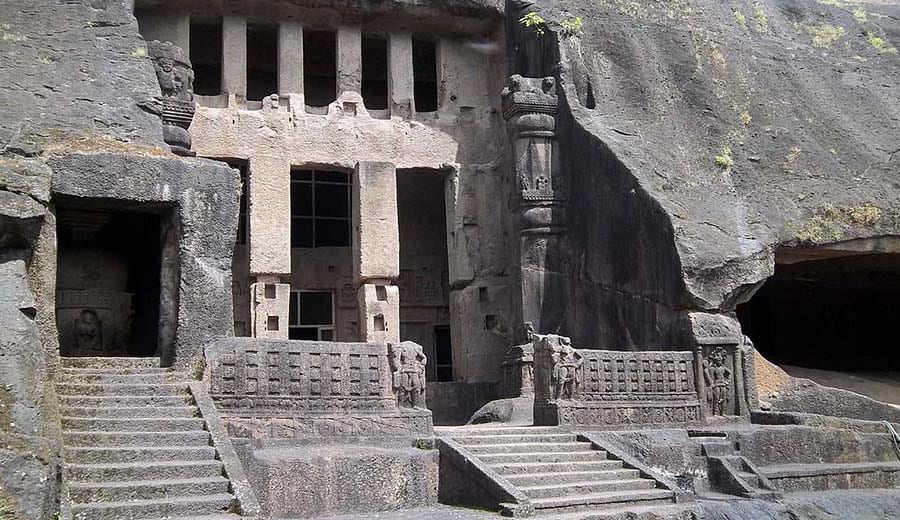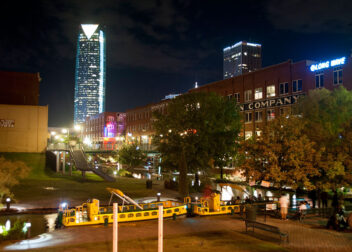Kanheri Caves
A cultural tour to Kanheri Caves
The word kachori is a term used from the Sanskrit language ‘Krishnagiri’ which means black mountains. The Kanheri Caves is a group of caves and mountains cut out of rocks within the forests of Sanjay Gandhi National Park. It stands on the western verge of Mumbai upon Salsette Island. The rock contains inscriptions of Buddhist sculptures starting from the first century BCE to the tenth century CE. Created out of Basalt rock there are 109 caves in the cave complex. The design is adorned and simple being a very old cave as compared to other highly decorated elephant caves. Each stone pillar in the cave contains a Buddhist shrine. By the end of the 3rd century, Kanheri Caves became a Buddhist settlement with Buddha carvings on the walls of the cave cum monastery.
Most parts of the caves were basically used for Buddhist teaching, living, meditating, and studying. The large ones carved intricately with Buddhist stupas are meant for worship. Usually, this religious place was formed with the purpose of teaching the moral values we should follow. Monastic used to produce lectures on religious texts. These caves were the house of the monks who strictly maintained discipline and lived a simple life, the purpose being salvation. There were so many Buddhist viharas that had trade connections with Ujjain, Nashik, Sopara, Kalyan, and Paithan. Because of this, Kanheri is regarded as the most valuable center for Buddhist education.
The kachori occupied a huge area and each and every cave is the living room of a monk. There is a stone podium in each of the caves that is used as a bed by the monks. The huge hall houses a Buddhist image of ‘Dagoba’. Group worship and religious meetings are held in this hall. Spiritual nature is modified when we come close to nature and kachori gives us the opportunity to get in touch with nature.
History
The Kanheri Caves have a history that spans from the 1st century BCE to the 10th century CE. They were initially used as rock-cut monasteries and gathering places for Buddhist monks and served as a center for Buddhist teachings and learning. Over time, the complex grew to include chaitya halls, viharas, rock-cut sculptures, and other structures. During the rule of the Satavahana dynasty, the caves were an important center of Buddhist learning, and many of the inscriptions found at the site date back to this period. After the decline of Buddhism in India, the caves were eventually abandoned and overgrown with vegetation. In the 20th century, they were rediscovered and restored, and today they are a popular tourist destination and an important site for the study of early Buddhist rock-cut architecture and art.
Structure represented
In cave 3 there is a colossal Buddha statue and Chaityagraha. There is a large Avalokiteshvara (representing compassion) in cave no. 2. The ceiling of cave 34 is painted. Some of the inscriptions are without dates but donations from kings’ names revealed the period of such inscriptions. There are 51 inscriptions along with 26 epigraphs. Devanagari, Pahlavi, and Brahmi inscriptions could be spotted here.
Details
The entry fee to enter the cave for Indians is 5 INR and for foreigners, it is 100 INR. The visiting hours start from 7:30 in the morning till 5:30 in the evening. Photography is allowed and most are seen taking pictures of the inscriptions and stupas. The caves are opened on all days of the week except Mondays.
How to reach
The Kanheri Caves are located towards northern Mumbai. The nearest railway station is Thane. You can reach there if you board the train from Churchgate going to Borivali. That will take a maximum of one hour. Auto rickshaws are available direct to the park. You can drive your own vehicle or else walk to the cave. Otherwise, buses and cycle rides are available to reach the cave from the national park gate. The bus charges 66 INR for a two-way journey. You need to get 5 km inside from the main entrance of the Sanjay Gandhi national park.
What to see
There is much to see in the Kanheri caves. You would be spellbound to view its natural beauty and you would feel like you have come to a totally different world. The surrounding is made in such away from the city life into the caves of the jungle. Life inside the cave is something you would like to experience. Trekking and trap zing is done by the tourists. The cave enclosed by the forest stands on hilly terrain, due to which you can spot some minor waterfalls nearby. The location is perfect for a small picnic with natural water bodies and rivers around.
When to go
The best time to visit the Kanheri Caves is from September to March. The climate during this period is very pleasant and cool which is suitable for going for a tour of Kanheri caves. Some nearby hotels to stay in are Taj Santacruz, Trident Bandra Kurla, and Zara dormitory.
Places to visit Kanheri caves
Chaitya Hall:
The chaitya hall is one of the most impressive structures at the Kanheri Caves. It is a rock-cut temple with a horseshoe-shaped entrance, which leads to a large central hall with a stupa (Buddhist shrine) at the far end. The chaitya hall is known for its beautiful carvings, including elaborate reliefs and sculptures depicting Buddhist symbols and figures.
Viharas:
The viharas, or monasteries, are some of the largest and most well-preserved structures at the Kanheri Caves. These multi-roomed complexes were used as living quarters for Buddhist monks and were equipped with sleeping cells, kitchens, and other facilities. The viharas are notable for their intricate rock-cut designs, including intricate carvings and elaborate pillar capitals.
Rock-Cut Sculptures:
The Kanheri Caves are famous for their beautiful rock-cut sculptures, which include both free-standing figures and reliefs. Some of the most notable sculptures include images of the Buddha, Bodhisattvas, and other important Buddhist figures. These sculptures are notable for their intricate details and the skill of the artists who created them.
Inscriptions:
The Kanheri Caves contain a wealth of inscriptions in various languages, including Sanskrit and Prakrit. These inscriptions provide valuable information about the history and cultural context of the caves, including details about the donors who funded their construction and the artists who created the sculptures and carvings.
Paintings:
The Kanheri Caves contain several well-preserved examples of ancient Buddhist paintings. These paintings depict scenes from Buddhist mythology, as well as portraits of important Buddhist figures. The colors used in the paintings are still vivid, despite the passage of time, and provide a glimpse into the artistic traditions of ancient India.
Waterfall and Tank:
The Kanheri Caves complex includes a large water tank and waterfall, which was likely used for ritual purposes and for providing water to the monks who lived in the viharas. The tank is surrounded by rock-cut benches and is a peaceful and serene place to sit and reflect.
Stupas:
The Kanheri Caves contain several well-preserved stupas, which are Buddhist shrines that contain relics of the Buddha or other important Buddhist figures. The stupas at Kanheri are notable for their elaborate designs and intricate carvings, which reflect the high level of skill and devotion of the artists who created them.
Nature Trails:
The Kanheri Caves are located in the heart of the Sahyadri hills, and the surrounding area is a popular destination for nature lovers. There are several well-marked nature trails that lead through the hills, providing opportunities to explore the lush vegetation and breathtaking views.
FAQ
Q: How do I get to the Kanheri Caves?
A: The Kanheri Caves are located in the Sahyadri hills, near Mumbai, India. The nearest airport is Chhatrapati Shivaji International Airport in Mumbai, which is well connected to major cities in India and around the world. From Mumbai, the caves can be reached by taxi or private car. There are also public buses that run to the caves from Mumbai and nearby areas.
Q: What are the operating hours of the Kanheri Caves?
A: The Kanheri Caves are open to visitors from 9:00 AM to 5:00 PM every day, except for national holidays.
Q: Is there an entry fee for the Kanheri Caves?
A: Yes, there is an entry fee for the Kanheri Caves, which is set by the Archaeological Survey of India. The fee is nominal and is used to maintain the site and provide facilities for visitors.
Q: Can I take photographs at the Kanheri Caves?
A: Yes, visitors are allowed to take photographs at the Kanheri Caves, but flash photography is not allowed inside the caves.
Q: Are there any guided tours available at the Kanheri Caves?
A: Yes, there are guided tours available at the Kanheri Caves, which are conducted by trained guides who can provide information about the history, architecture, and art of the site. Guided tours are a great way to learn more about the caves and to get the most out of your visit.



